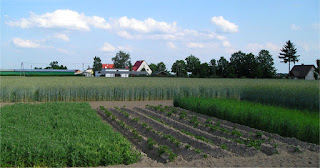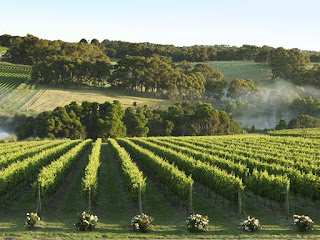In 30 plus years of agricultural advisory work, I have encountered a
number of farms that were successful, but also a fair number that were
experiencing difficulties. Each
situation is unique, but there are some common, broad, themes that are
applicable across almost all of those farms having issues. While inherent in the notion of a struggling
farm are financial issues, this essay takes aim at three basic things that, in
some combination, lead up to financial issues.
There is a tendency in a struggling business to look for a panacea, or
in the case of agriculture and its current rapid evolution of technology, the
newest and greatest “big idea.” Unfortunately,
the quick cures and big ideas often miss the underlying basic issues.
 |
The first item is the
soils. The understanding of soils has
come a long way from the time when NRCS soils maps were developed, which, in
the case of many parts of the US, was 30 or more years ago. There are now several more precise ways to
evaluate soils on a farm, and then to better understand their capabilities and
their limitations. A starting point, for
example, is using the Veris technology to map a field by zones; once those
management zones are established, then soil samples are taken in each of the zones, and prescriptions can be devised
to match input usage with soil capabilities within each zone.
Another factor for the soils
is how they have been managed on a long term basis in terms of farming
practices. I have found otherwise
productive soils to have serious issues with, say, hardpan layers, that will
limit optimal results no matter the amount of money that is put into inputs for
them, or the amount of water applied (if irrigated). Correcting bad soil management practices
requires patience, but it first demands the level of detailed understanding of
the soils that can only occur by way of careful zone mapping of the
fields.
An example of the above is a
current project on a large irrigated farm where a one size fits all fertility
and water management program has been used for years on various crops. The farm
is failing, and our initial analysis has revealed exactly the kinds of soil
related issues that I have just noted. Crop
yields are 50-60% of the true capability of the soils. Water use efficiency is 20-25% less than what
it should be because the years of poor farming have taken their toll on the
ability of the soil to absorb water. Steps are being taken to do the Veris mapping,
zone specific soil testing, and then a prescription farming program will be put
into place so that each field can be managed at a micro level basis. While an ultimate goal of the program on this
particular farm is very focused on no till practices, all fields are being deep
ripped as a means of breaking up two hardpan layers that severely limit root
development, and water movement.
The second factor is water
management. In a non irrigated
situation, this generally means limiting tillage—which depletes plant available
water with each pass over the field—and relying more on a no till or minimum
till program. It also means making frequent use of soil
probes to check stored soil moisture prior to making planting decisions, and
then during the growing season as a means of assessing crop potential, and the
wisdom (or not) of applying additional fertilizer to achieve a certain yield
goal. Further, it means looking at the
varieties of crops that can be planted, and determining whether evidence
suggests that some varieties are more water efficient
than others. This goes hand in hand
with understanding the soils because the water holding capacity of soils
varies, and hence, one may make cropping decisions related to how water is
available in some soils at differing levels than in others.
On irrigated farms, I have
found a fairly wide variance in the understanding of the importance of water
management. This is not just a question of applying X
inches of water per acre. The key is making the water available where it is
needed—at the ground level for the plants.
Many irrigated areas of the world have high evapotranspiration rates,
and it continues to amaze me that inefficient irrigation techniques are still
in use in a number of those areas. What
this comes down to is making a water budget for the farm, on a field by field
basis (taking into account the aforementioned system of zone mapping of
fields), looking at more efficient ways to get the water to the ground, and
then tracking water use during the season, along with making good judgments on
irrigation scheduling. This is not a
simple process, and there are several moving parts, but systems are available,
at reasonable cost, for a farmer to tighten up water management. In my
experience, I have found instances where water use efficiencies could be
improved from the 60% range to the high 80s with a few simple, and low cost
changes to hardware. In some of those
examples, the updates paid for themselves with one season of use.
The third item is
people. I like to say that all of the
technology in the world will not fix a failing farm unless there is a sea
change in one place—between the ears.
That’s right—attitudes have to change, to reflect the reality of tight
margins in this business. It involves
going back to the basics, to the two most critical assets on the farm—soil and
water resources—and how they are managed. Everything flows from them. There are generational issues that get in
the way of clear thinking in some cases. There is the attitude of “well, we
have always done it this way.” I tell
my clients that we are starting with a clean sheet of paper, and that taking a
step back and realizing that they have been stuck in a rut for a long time,
will go a long way towards finding solutions.
As I said earlier, all of the hottest new tech out there will solve
nothing if a farmer fails to sharpen his or her focus on the basics. Get them
right, and then good things will start to fall into place.
-----
Benedict T. Palen, Jr. is a fifth generation farmer who works in an advisory
capacity with farmers, investors, and others, involved in agriculture. He can
be reached at 720-626-7661.





